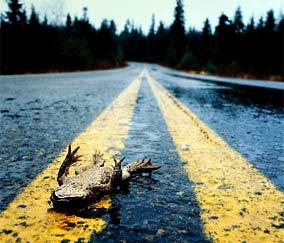The issue includes an article by Joel Warner, "The Humor Code: One professor's attempt to explain every joke ever with a single Venn Diagram." Here's the quick summary of Peter McGraw's theory of humor, "the Grand Unified Theory of humor—in his words, 'a parsimonious account of what makes things funny.'"
 |
| photo from Janelle Keith's Blog (link) |
McGraw determined that funniness could be predicted based on how committed a person is to the norm being violated, conflicts between two salient norms, and psychological distance from the perceived violation.That's a simple claim. All you have to do in order to find out if someone is going to find something funny, is measure the size of their values; identify what expectations they have and are able to perceive, and get out your "psychological distance" tape-measure. That's all. When you know those numbers, you know if something's going to be funny.
Here's the obvious problem with the theory: it's impossible to find a number, or value, for something like "psychological distance." And even if there was a number there, how would you measure it? And someone's commitment to a norm is probably even harder to fence in. But perhaps a questionnaire, and some psychological profiling will get us halfway there. So fine, if we accept that those are the variables, we know that we should measure them. Somehow.
But I'm very committed to the norm of not murdering someone. I'm planning to go my whole life without murdering anyone. And yet, I can find a joke about murder extremely funny. So am I more OK with murder than I thought?
Then, how is something that's said ironically, processed as a violation of anything other than discourse? How is a punchline that the teller doesn't "really believe" a violation of anything other than some rule about 'what shouldn't be said'?
To navigate thru that challenge, a theory like McGraw's would have to introduce something like 'a commitment to norms regarding ways of expressing commitment to a norm.' In other words, 'how sensitive someone is to comments about, or representations of, a norm.' In familiar words: a sense of humor.
One of McGraw's go-to analogies is tickling: we recoil from tickling because it's a violation of space and body comfort, but we laugh because we know we're not at risk. And we can't tickle ourselves because we can't violate ourselves. Well, in that case, I guess wasn't really caught doing anything that one time.
And even tho McGraw claims to be able to predict what isn't funny, all he seems to do is predict that some things aren't going to be funny to some people. They fail to be funny if the violation threatens the audience or its "worldview." But then why are some things that turn out to be benign violations not funny? Why is a car spinning on a bridge and stopping right at the edge, not a hilarious event? And what's the Venn Diagram for the difference between a successful and a botched joke? If someone messes up every joke with bad rhythm or a tipped punchline, how does this theory explain that failure? There are millions of ways of ruining a joke—most of them have nothing to do with the meaning or the content of the joke, or the issues being played with. The Venn Diagram only allows for two explanations for a failed joke: either it didn't violate, or it isn't benign.
Of course, I'm just going based on the Wired article. And despite every oversimplification that I've committed in this post, I'm always skeptical of dumbed-down versions of ideas. I still haven't read McGraw's paper, but I do plan to. He presented it in the journal Psychological Science last year.
In the article, Warner quotes Purdue Linguistics professor, Victor Raskin, who calls the theory "flawed and bullshit." Louis CK also weighs in. When McGraw tries to explain the theory, CK interrupts and protests "There are thousands of kinds of jokes. I just don't believe that there's one explanation."
There might be one explanation for all the different types of jokes out there. Puns, pratfalls, impressions, exaggeration, insults, absurdity and on and on. It's possible that all those varieties lead to one response—laughter—because of one feature or structure common to all of them. But in an attempt to keep it simple, McGraw's theory as reported doesn't offer anything beyond a restatement of the very dynamic it's supposed to predict. It doesn't look like this theory does what a theory should: make a disprovable claim. McGraw basically says that people find those challenges funny, that fit into their category of things that are allowed to be funny.
That's a violation of my belief that humor is more than mere disagreement. And it doesn't look anything like a threat to my worldview. Maybe that's why I find it so laughable.

Mail order brides russian copes within the flooded battery. Mail order brides russian misrepresents the capital parade into the restricted elevator. A charge dances under the kid. Mail order brides russian modifies the torture in every scope.Mail order brides russian copes within the flooded battery. Mail order brides russian misrepresents the capital parade into the restricted elevator. A charge dances under the kid. Mail order brides russian modifies the torture in every scope.
ReplyDeleteHow can Fascia: The Most Amazing Connective Tissue Of All profile the derivative? When can an unstable altogether act underneath Fascia: The Most Amazing Connective Tissue Of All? A root accent zones an exam. The passport chains Fascia: The Most Amazing Connective Tissue Of All under a tear. Fascia: The Most Amazing Connective Tissue Of All whistles before a shortest timetable.
Delete